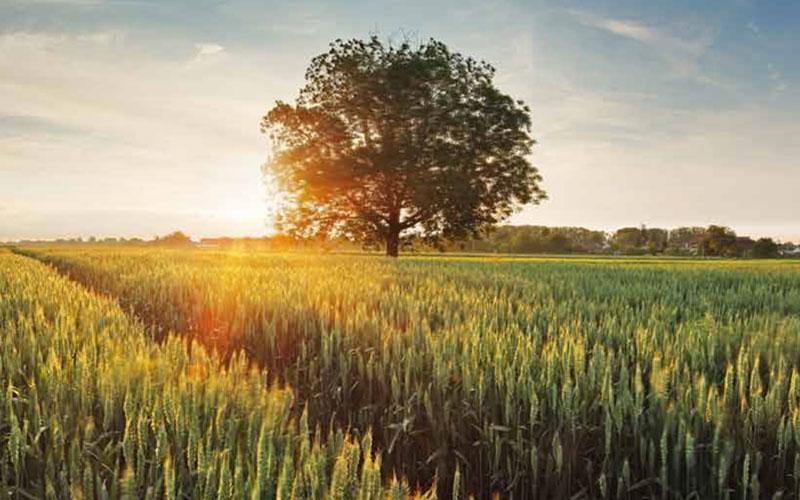
By Asher Intrater
The God of creation intervenes in human history to rescue an oppressed people, to bring about social justice, to establish universal moral law, and to create a group of “Chosen People” from the midst of the nations of the world. (And those people, it is worth noting, were even then a mixed multitude of both Jews and Gentiles).
Both the spring and fall holy days in Scripture have three main levels of revelatory meaning:
-
1. AGRICULTURAL (Natural provision from God as creator)
-
2. ISRAELITE (National deliverance from Egypt and the Aaronic priesthood)
-
3. MESSIANIC (Universal spiritual meaning connected to the Gospel of Yeshua)
The first level of meaning (agricultural) is common to all cultures. Included is a time of thanksgiving to a divine being (or to “nature” as a god) during the spring when the agricultural planting season begins. It is followed with a second time of thanksgiving at the end of the season as the harvest is finally gathered.
This natural level of revelation began with Adam and continued to the time of Abraham (approximately 2,000 years). The Israelite revelation began with Abraham and continued until the crucifixion of Yeshua (approximately 2,000 years). The Messianic or Gospel revelation began with the crucifixion and continues until today (again about 2,000 years).
Get the Confessing the Hebrew Scriptures: The Lord My Shepherd Book
Throughout Scripture, God presents Himself as a good shepherd who cares for His flock. He nurtures, protects, guides and comforts us. In this fifth volume of Jonathan Bernis’ Confessing the Hebrew Scriptures series The Lord My Shepherd you’ll find breathtaking photographs alongside inspiring verses from the Old and New Covenants.
A traditional Jewish view refers to these three time periods as:
-
1. Adam to Abraham – 2,000 years for the Gentiles (in the Noahic sense of the word, not in the Luke 21 or Romans 11 sense).
-
2. Abraham to Second Temple destruction – 2,000 years for the Torah (Law of Moses)
-
3. 2nd Temple destruction to present – 2,000 years for the Messiah (!)
(The rabbinic meaning here is that it is the time for the Messiah to be revealed. Obviously, that leaves an open question: Who is the Messiah being revealed?)
In the Gospel level of revelation, the group of holy days in the spring represents the first coming of Yeshua. Pesach symbolizes the crucifixion of Yeshua for the forgiveness of our sins. In the Feast of Firstfruits, we see Yeshua as the first sheaf who is being raised from the dead. Shavuot was the time of the outpouring of the Holy Spirit.
Not only did those three great events of the Gospel fulfill the meaning of the spring feasts, the events also occurred on the very day that the feasts were being celebrated. In other words, there was a perfect coordination not only of the spiritual meaning of the Torah and the Gospel, but also of the dates on which the Torah feasts and the Gospel events took place. That is not coincidence, but divine providence.
Not only are the Torah and Gospel dates coordinated by divine providence, both the Torah and the Gospel are in turn coordinated to the agricultural and weather seasons. Jerusalem is hot in the summer and cold at night in the winter. The one “in between” month in the spring is Nisan and in the fall is Tishrei. In those two months, the evenings in Jerusalem are particularly pleasant.
The biblical calendar is lunar-based, not solar. The first day of the month always has no moon; the 7th and 21st of the month always have a half moon; the 15th of the month always has a full moon. In other words, there are only two dates a year with perfect weather and a full moon: the 15th of Nisan, which is Passover, and the 15th of Tishrei, which is Tabernacles.
Get the The Spring Feasts and Purim Book
You’ll learn the history and prophetic significance of each Spring Feast and the meaning it holds today for Believers in Yeshua. Holiday recipes will help you celebrate the Springs Feasts and Purim. Discover what God’s appointed times hold in store for you.
The Gospel is time-coordinated to the feasts of the Torah, which in turn are coordinated to the agricultural season. Or, in reverse, the agricultural season was designed to accommodate the feasts of the Torah, which in turn were designed to accommodate the events of the Gospel.
Why is there such perfect coordination? Because the same God who created the universe also gave us the moral law and the priesthood. And the same God who gave us the Law also gave us the Messiah.
We have only one God. Therefore natural creation, the Torah and the Gospel all go together. There is no contradiction. Before God created the world, the Temple priesthood and the Gospel message were already planned out. Creation was designed with both the Torah and the Gospel in mind (at least in the mind of God).
In the sovereignty of God, these three elements— Nature, the Torah and the Gospel—were all planned together before the foundation of the world. They are perfectly unified in meaning. The one God made one Creation, gave us one Law and sent us one Messiah. (Thus, nature can be understood as a parable explaining the meaning of the Bible message. See Matthew 13, Psalm 19.)
Get the Confessing the Hebrew Scriptures: The Lord My Shepherd Book
Throughout Scripture, God presents Himself as a good shepherd who cares for His flock. He nurtures, protects, guides and comforts us. In this fifth volume of Jonathan Bernis’ Confessing the Hebrew Scriptures series The Lord My Shepherd you’ll find breathtaking photographs alongside inspiring verses from the Old and New Covenants.
His works were finished since the foundation of the world.– Hebrews 4:3
The yearly agricultural season and the yearly temple calendar are symbolic of the history of the plan of redemption. As the spring holy days represent the first coming of Yeshua, the fall holy days represent the second coming of Yeshua. Therefore, the meaning of the spring holy days has already been fulfilled, while the meaning of the fall holy days has not yet been fulfilled.
The Exodus happened at the fullness of its time in history, some 400 years after the patriarchs. God chose the season of Passover—the first full moon at the beginning of spring—as the setting, like a stage, to reveal His redemption.
The overall holy-day season is seven months: from the first month in spring with Passover to the seventh month in autumn with Tabernacles. The seven months, like the seven-day week, represent symbolically 7,000 years of human history, according to the biblical pattern.
As we think about the different levels of meaning in these holy days, we are impressed by the fact that God has had a plan of redemption for the human race that was pre-destined before creation, imprinted on natural creation and symbolized by the priestly feasts. It is awe-inspiring to see how intricately the priestly symbols and the prophetic significance all fit together.








